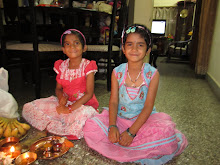Hassan district is known as
the cradle of Hoysala
Kingdom
It is also in Belur and
Halebidu that we find the incomparable Hoysala temples. Halmadi is a tiny
village in this district where the earliest Kannada inscription dated 450 AD
was discovered.
Hassan is also known for its
coffee and black pepper. It is veritable paradise of Nature and it has emerged
as the favourite destination of tourists, Nature lovers and pilgrims alike.
However, the district has one
peculiarity that few know of. The name Hassan comes from the deity of
Hassanamba, which is the guardian of the
city.
Hassan boats of at least 50
temples of historic and archaeological importance but the Hassanambha Temple
The Hassanambha Temple
The temple structure, as it
stands now, is believed to be of the twelfth century. This was the time when
the Hoysalas were ruling from Dwarasamudra or today’s Belur which is 31
kilometres from Hassan.
The city of Hassan
itself was founded in the eleventh century and the Hassanambha Temple
The Goddess Shakti or Amba is
the main deity here and the inner chamber of the temple housing her statue is
open for only two weeks, especially during Deepavali and it closes three days
after Balipadyami.
The goddess is sculpted on an anthill or hutta in Kannada which resembles the deity of Hassanamba as Goddess Parvathi. When the temple is closed, people keep water, bags of uncooked rice, a lit lamp and flowers in front of the goddess.
The goddess is sculpted on an anthill or hutta in Kannada which resembles the deity of Hassanamba as Goddess Parvathi. When the temple is closed, people keep water, bags of uncooked rice, a lit lamp and flowers in front of the goddess.
Devotees believe that when
the temple is opened the next year, the rice remains the same and the lamp too burns
without going out. The inner chamber also has an idol of Ravana and his nine
heads. This is a rare idol as we see Ravana playing the veena.
Hassanamba is believed to be
a smiling and ever merciful Goddess. When the temple doors are opened during Ashwayuja
(October), thousands of devotees flock
to have her darshana. The devotees fell that it is during this time that the
Goddess bestows her mercy and grace to them.
There is an interesting
legend about how the Goddess or Shakti came to the place. Several thousand
years ago, seven women or Maatrukes or Sapta Maatrukes as they are called in
Kannada came floating towards south from Varanasi
The women were Brahmi,
Maheshwari, Kumari or Kaumari, Vaishnavi, Varahi, Indrani and Chamundi. When
they saw Hassan, they fell in love with the beauty of the place and the calm
and serenity that the place exuded.
All of them decided to stay
back in and around Hassan instead of going back to Varanasi
The temple has another amazing legend but this is as true as the stone which is connected with it.
The temple has another amazing legend but this is as true as the stone which is connected with it.
There is a stone within the
temple. The stone is believed to move less than an inch every year towards the
deity in the inner sanctum. Once the stone reaches the deity and touches the
Goddess, the world is supposed to come to an end and Kali Yuga too ends.
Well, how did this legend
take birth.
According to the priests of
the temple, several centuries ago, a woman used to visit the temple every day.
She sued to pray every day before Hassanambha and seek her blessings. One day,
her mother-in-law threw a stone at her and the woman started bleeding.
The woman was petrified and
she cried out to Hassanambha for help. The Goddess manifested herself before
the woman and transformed her into a stone. She ordered the stone to remain
within the temple so that she could guard her every day.
The stone has been moving
towards the deity inch by inch as if to seek protection from the Goddess.
There are four other stones
in what is called Kallappa Gudi. The
four stones represent the four robbers who came to the temple to burgle it.
When they saw the jewels on Hassanambha, they tried to steal it. They ended up
becoming cursed and turned into stones.
The construction of the
temple is also ascribed to Malik Kafur, the renowned general of Ala-ud-din
Khilji.
Kafur had completely
devastated Dwarasamudra and he came to Hassan where he and his troops took
rest. His soldiers cooked meat near an anthill where three of the devis from Varanasi
A panic stricken met the
priests of the devi temple but to no avail. Hassanambha then appeared in
Kafur’s dream and asked him to build a temple for her. When Kafur did so, he
earned the forgiveness of the devis and the soldiers stopped dying.
Kafur then went on to conquer
the rest of south India
Locals, however, insist that
a palegar, Krishnappa Nayaka, built the Hassanambha temple.
Once the temple was completed,
the devis ordered the archakas and others to ensure that it was opened for
darshan only once in a year and that too during the lunar month of Ashwayuja.